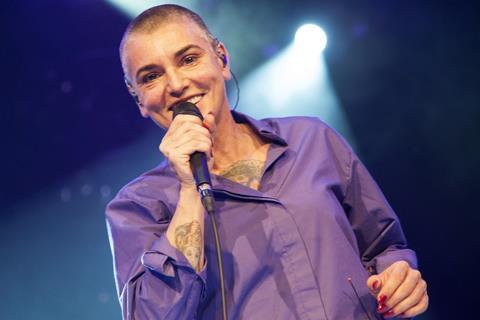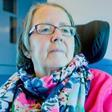Dr Margaret Kennedy pays tribute to the Irish singer-songwriter who was campaigning for sexual abuse in the Church to be exposed long before it became mainstream

Born Sinead Marie Bernadette O’Conner on 8 December 1966 in the Cascia House nursing home – where I, too, was born. Died 26 July 2023, aged 56.
I did not know Sinead O’Connor, nor did I ever meet her. But I do know something about her life. I would like to start from a point of reference that many do not understand; she was a prophet.
Growing up in Ireland in the 60s was to grow up in a country bedevilled with a type of Christianity that was cruel, backward, patriarchal and impossibly stifling. You did what you were told by the priest, the bishop and the nuns. You were never free. Every Catholic family became somewhat damaged by that, even if no overt abuse took place.
People felt the deep love she had for the wounded. Isn’t that the essence of a priest?
Nearly all girls had Marie or Mary as their second name, after Mary, mother of Jesus. I did too. Sinead also had the name Bernadette, the young girl who had a vision of Our Lady at the place which is now called Lourdes.
She was marked, as we girls all were, to be subservient, quiet, dutiful and, most of all, virginal. No other country was so enclosed from reality (and thus freedom) as Ireland was under Archbishop McQuaid and President de Valera who, jointly, carved a conservative, repressive patriarchal state. No woman or girl was allowed to have her say.
I smile, knowing that Sinead was not so easily ‘caught’. She had three other names: in 1999, O’Connor was ordained as a Latin Tridentine priest and took the name Mother Bernadette Marie. In 2017 she changed her legal name to Magda Davitt. And in 2019, after converting to Islam, she became Shuhada Sadaqat. Monogamy was not her forte either; she had four known partners.
A broken childhood
Sinead grew up just down the road from me in County Dublin, a ‘posh’ middle class suburb. I was 13 when she was born. I was a deaf child and shared a history akin to hers of abuse and family chaos.
Hers was a dysfunctional family. She declared that she was abused by both her father and her mother. And it was her brother who confirmed that they had all been abused, physically and emotionally, by their mother, who was extreme in her violence. Her parents split up.
Those of us who have been abused in childhood are the brothers and sisters of all abused children
Sinead was very angry that she had to stay with her mother. Later, she went to live with her father but her experience of ‘family’ damaged her. Hurt, angry, probably confused and feeling lost, unloved and rejected, at the age of 14 she was unruly, stealing and “looking for attention”, Sinead said. Her family was a toxic mix of strict Catholicism, violence, emotional abuse, neglect, parental separation - all before she was nine years old.
And more was to come.
Aged 15, she was sent to An Grianán ‘training centre’, a Catholic-run home for ’troubled girls’ for 18 months. She described it as a “prison”, where she was “deprived of a normal childhood” and girls “cried every day”. An Grianán was on the same site as the notorious High Park Magdalene Laundry (a 2019 report into financial redress for children who were abused while resident in industrial schools and reformatories showed ”quite categorically” that the two institutions were ”one and the same thing”).
It is clear that, apart from receiving a guitar while she was there, she was further damaged by her stay. She then went to a Quaker school where her singing and musical abilities were nurtured.
Speaking out
Sinead chose a path that would not have been easy for any damaged child. It takes courage to be so outspoken and challenge so openly, especially coming from her repressive and abusive childhood background. Such backgrounds usually do the opposite, making a child turn inwards, believing they are no good, no use, unlovable. Somewhere along the line, Sinead received enough inspiration from God or the Holy Spirit to speak truth to power.
I believe all suffering has a resurrection. It comes in various guises
Sinead was not “looking for attention”; she was looking for truth, love and justice. Even power. She was looking to find an answer to the questions we all ask: Who am I? What is my purpose in life? What could she to do with the pain and suffering she experienced? How could she manage that? She needed an identity.
In 1999, she was ordained a priest in the Irish Orthodox Catholic and Apostolic Church. In 2018, she embraced Islam. It may seem bizarre to those who have had normal, safe, secure family life, but a damaged child needs rules of some description to live by. As an adult, they need a focus and a role in life. Most of all, they need to feel loved.
A prophetic voice
So, what of my belief that she was prophet and priest? I believe all suffering has a resurrection. It comes in various guises. Only the person themselves knows what form that resurrection takes.
Sinead and her music were born out of Ireland, a very damaged country. Her lyrics were born out of her family pain and suffering. Her outspokenness and anger were born out of her abuse. We need that truth to jolt us out of complacency.
When she tore apart a picture of the Pope on Saturday Night Live in 1992, she was preaching. That picture was taken from the bedroom wall of her mother, a staunch Catholic who also violently abused her. Sinead knew about the abuse of thousands of children at the hands of priests in that same Catholic Church. Those of us who have been abused in childhood are the brothers and sisters of all abused children. Sinead was having none of it. She was the first to speak out. And in speaking, she was preaching publicly.
She said things that were not being said at the time. She was an authentic prophet. And being a prophet, she was also an authentic priest to many - who desperately needed to know that there was someone willing to speak out; who was willing to say the things they could not. Someone who had a platform; someone who had the opportunity to make people hear and listen and, most of all, to call them to account. She spoke truth to power.
A priestly call
Yes, Sinead showed vulnerability and weaknesses. Yet, in showing that, she demonstrated that we can all have something to say. And it could come from God. It is no coincidence that she wore a clerical collar at some points, a hijab at others. For her, they were symbols of faith and a calling.
And this is why so many people around the world love her and are deeply upset by her death. They felt her authenticity, and the deep love she had for wounded people. Isn’t that the essence of faith, and of a prophet and priest?
I pray that the wanderer, Sinead, has returned to her real heavenly home, where she will sing with the angels and her son, may she rest in peace.




































No comments yet